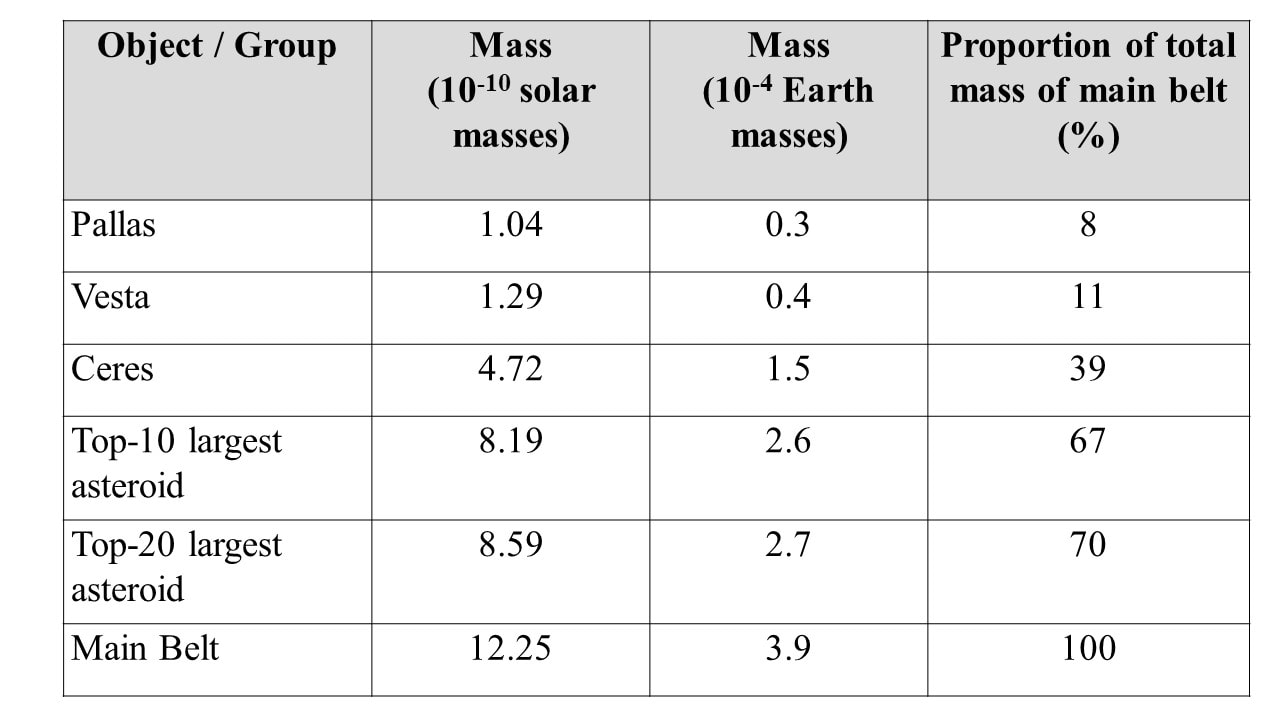As we have noted earlier (our July blog), the infrared wavelength reflectivity of an asteroid is a good indictor/measure of the surface area. The visible light brightness, when combined with surface area estimates, gives a good indication of albedo and variations in brightness at either / or visible and infra-red wavelengths can give an estimate of asteroid shape and size. Albedo and spectra (absorption line) analysis provides the taxonomic class of the asteroid (August blog) and this can be used as comparator to meteorites to provide an estimate of density. Once we have density, shape and size, determination of mass then becomes a straightforward calculation.
Gravitational dynamics. The gravitational effect of the largest asteroids/minor planets on other solar system bodies, although small, can be measured directly. Additionally, where an asteroid is in a binary system or has a ‘moon’ (the first detection of an asteroid having an orbiting moon was made in August 1993 when 243 Ida was observed to have a very small moon, subsequently named Dactyl), the joint mass of the binary system can be determined by orbital dynamics by using Kepler’s third law in absolute units – see our book or any text book on orbital mechanics.
In-Situ measurement. The highest accuracy estimates of mass can be made from space probes and missions to or flybys of the asteroid. Several missions have targeted the asteroids. The mass of the asteroid can be assessed very accurately by the effects it has on the trajectory of these space probes.
Furthermore, whilst individual masses can be estimated, an estimate of the totality of mass within the main belt can be made by considering the gravitation effect on the planets, particularly Mars, of the main belt torus of asteroids between 2.0 and 3.3AU as a whole. By a combination of these methods the following estimates of masses have been derived:
Over the next few months our blog articles will look at precisely this scenario; the likelihood; the effect; and what we can, or cannot, do about such an event.


